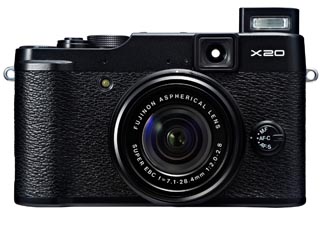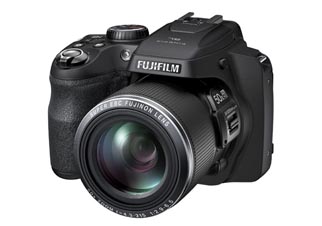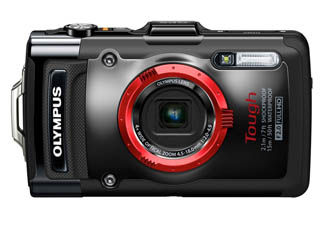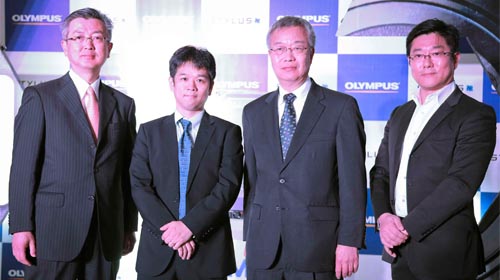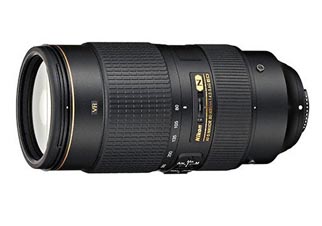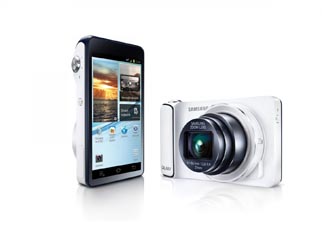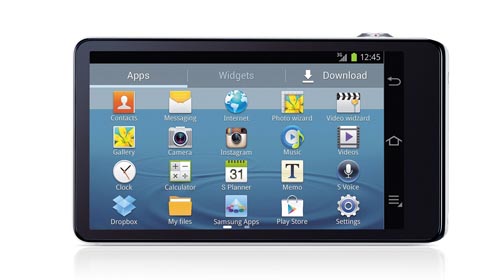After the launch of Fujifilm X10 in 2011, which was one of the most advanced compact cameras in its segment then, Fujifilm has developed yet another camera in this segment, the Fujifilm X20. With similar attributes like its predecessor, the X20 is loaded with a 12 megapixel sensor, 28-112 mm equivalent lens capable of 4x manual zoom and a 1080p HD video recording capability set in a body designed very similar to the X10. What distinguishes it from the X10 though is its new X-Trans CMOS II sensor, an improved 12fps burst shooting mode and Focus Peak Highlight, to name a few features. But do they add up to a convincing reason to buy?
Look, body and feel
At first glance the X20 looks just like its predecessor the X10, although it’s now available in a dual tone silver-and-black finish, an addition to the conventional black finish. The camera has a magnesium alloy body with black leather finish around most part of it. The well crafted X20 has a sturdy and superior build which feels reassuringly solid in the hands.
The X20 doesn’t just imbibe similar looks as the X10, but also similar control buttons and dials. The top panel of the camera features an a mode dial, shutter button which is threaded for a mechanical cable release, a customisable Fn button and exposure compensation dial. There is also a centrally-mounted hot shoe for an external flash unit, and a little pop-up flash on the left.
The front of the camera is minimalistic and maintains a retro feel. It houses 28-112 mm f/2.0 Fujinon lens which has an integrated power switch on it, similar to the one on the X10. New users may find it a little confusing at times, trying to locate the power button, but overall this feature helps reduce the need of an additional power button and also gives the camera a compact look. The front of the camera also houses a conveniently placed swivel focus mode dial, the autofocus white led lamp and a stereo microphone for recording audio.
The back of the X20 consists of a larger optical viewfinder than its predecessor, which displays data such as shutter speed, ISO etc. An eye sensor beside the viewfinder window helps for automatic switching with the rear LCD. Other than the 2.8 inch 460k dot LCD screen which dominates the back of the camera, a host of ergonomic control buttons and dials add to a smooth and quick control of the cameras settings. One such example is the button labeled ‘Q’ which facilitates quick changing of camera settings.
Features
The Fujifilm X20 comes with impressive features. The sensor adopted by the X20 is a 12 megapixel 2/3inch X-Trans CMOS type. X20’s sensor is nearly 50% the size of the sensor of Sony RX100, which has a 1 inch full frame sensor. X20’s sensor is larger than most of the cameras in the advanced compact camera segment today.
Other than using the rear LCD to compose your images you can also use the optical viewfinder, with 85% coverage, a diopter control and to top it all, Fujifilm has developed a Digital Trans Panel which overlays the viewfinder and displays shooting information such as shutter speed, aperture, ISO, and focussing area. The viewfinder displays the information in one of three different colours, depending on the scene and shooting conditions – black in good light, green in bad, and red if an error occurs.
There is Focus Peaking display for manual focus using the
rear LCD. While shooting using manual focus, the X20 focusses accurately by using the Focus
Peaking Highlight which indicates areas of highest contrast. The Fujifilm X20 boasts of a continuous burst
shooting rate of 12fps for 11 JPEGs while shooting a burst of RAW files at 9fps
for 14 RAW photos.
The X20 records videos in full HD 1080 at 60fps with built-in stereo microphones for audio support.
Performance
In the last few years Fujifilm has been producing cameras with unique styling and consistently good image quality. Like its predecessor, the Fujifilm X20 is quite a performer.
The camera is easy to use; manual focus zoom ring gives the user additional control. The focussing mechanism on the X20 is spot on, however the focus does lag in low light conditions while shooting at a higher focal length. The optical viewfinder on the X20 could revive the trend of using the viewfinder instead of the LCD screen to compose frames. While shooting close up shots, switching to the Supermacro mode allows the user to focus as close as 1 cm to the subject. The rear LCD screen is clear and bright and is not affected by glare and reflection.
The image produced by the X20 contains details and they are not lost even after when zoomed in 100% of the image size. The larger than usual sensor is responsible for the excellent image quality. The colours reproduced by the camera are accurate and vibrant. The images display good contrast and the tonal range shows good detail in shadows as well highlights. While shooting using the auto white balance, the colours in the frame are reproduced accurately even under mixed lighting. In addition, the X20 has digital filters in the Advanced Mode which include Toy Camera, Pop Colour, Miniature, Partial Colour and so on which are fun to experiment with.
ISO performance
The Fujifilm X20 performs well in low ISO sensitivities but while shooting in low light situations, the images reveal slight traces of noise at higher ISOs (ISO 800 and above). When shooting at ISO 3200 and above the noise becomes very visible and there is a loss in detail.
Conclusion
The Fujifilm X20 is similar to the X10 but with definite improvements.
The better image quality owing to the new megapixel 2/3-type X-Trans CMOS II
sensor with no low-pass filter, the hybrid optical viewfinder and speedy
autofocus are few features that make this camera stand apart.
The camera is priced at Rs. 39,999, higher than most cameras in this
segment. Loaded with excellent image quality that comes in a cool retro look,
the X20 is an excellent camera.
Text: Steve D’Souza

